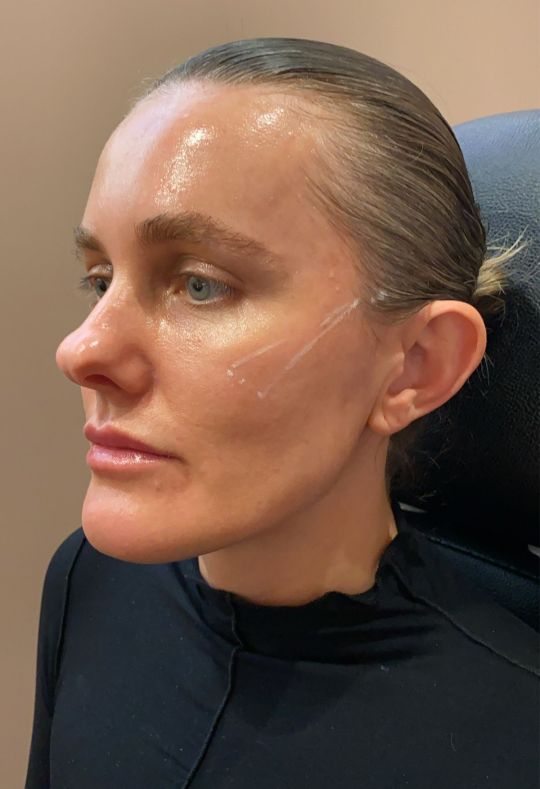July 31, 2021 at 08:00AM
First of all, let me speak about the elephant in the room. At age 41, I am still young and have healthy skin (thanks to a stringent routine of cleansing, toning, treating, moisturising and sunscreening since age 14), and quite honestly, I feel better in my skin than I ever have. But there’s no denying the collagen depletion and bone loss that comes with age. Yes, that’s right. Apparently, bone mass peaks around ages 25–30 years and declines gradually thereafter in both men and women. Yay!
This is why I started having fillers at around age 37. (You can read my previous articles where I wax lyrical about liquid facials and lip fillers.) Now that I’m entering my 40s, I wanted to try something that didn’t just fill the depleted areas but that actually helped my own body generate its own collagen over time. Enter thread lifts. I first heard about threads through Vanessa Lee, RN, a world-renowned medical aesthetic provider and founder of The Things We Do. Her “beauty guidance with natural intention” philosophy has garnered a major A-list clientele list (everyone from Kate Hudson to Lucy Hale to Kourtney Kardashian are fans of her skincare line and beauty tools), and it’s easy to see why: Lee’s work speaks for itself.

After she had completed one side (I had threads in my cheeks and under the jawline), Lee handed me a mirror to the results, and I audibly gasped. The results were instantaneous. Take a look below to see how much more lifted my face was on the left than the right midway through the process. I mean, you could visibly see the lift—a remarkable difference. The whole procedure took a total of 30 minutes max, and then I was on my way home. Once the anesthetic wore off, there was a slight aching in my cheeks from where the threads were inserted, but it wasn’t unbearable. I took some gentle painkillers before bed (please consult your GP first) and was told to lie on my back for the next few nights to ensure the threads weren’t disrupted. As a side sleeper, this was probably the hardest part for me.
ADVERTISEMENT
ADVERTISEMENTKate Spade Autumn/Winter Sale |
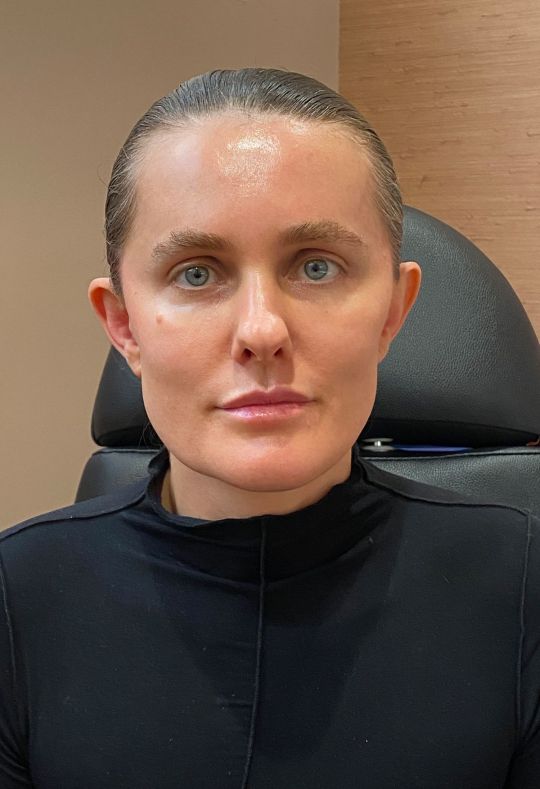
What are threads, exactly?
There are a couple of different kinds of threads that are popular on the market in the US. PDO threads are biodegradable, absorbable sutures that are made from polymer comparable to a complex sugar. Less popular are the threads that are made from poly-L-lactic acid (same as Sculptra) and are also made from absorbable polymers that signal collagen growth and tissue renewal.
They are known as “threads” in the aesthetic space but have been used in surgeries for decades under the name “sutures.” That’s right—these cosmetic enhancement threads are made of the same materials that surgeons use to close up lung and heart tissue.
Cosmetic use of sutures from plastic surgery gained real traction in the late ’90s and early 2000s when threads were used to suspend damaged cheek tissue, and soon after that, permanent sutures were being used to help lift the face. However, the permanence served as more of a problem than a solution. and it was recognised that the absorbable sutures have fewer risks, were more aesthetically pleasing and could be placed and customised according to the patient’s aging process.
These days, threads are used to help lift sagging brows, contour the midface and tighten the jawline area that becomes susceptible to “jowling.” Popularity is growing in the aesthetic medical industry every day.
What types of threads are out there, and how do you know which one is right for you?
PDO and PLLA threads are the two main types of threads that you will find being used in the US by providers, PDO being the most widely used. They are both bio-stimulators, causing the skin and tissues to strengthen and build collagen, but PDO threads tend to be made in a wider variety and in more flexible and customizable forms than the PLLA threads, which are typically placed deeper in the tissues and can have more risks with dimpling and granulomas.
I prefer to use PDO threads with my patients, and within that framework, there are many different profiles of PDO threads. There are smooth threads to build skin thickening, twisted or cyclone threads to induce amplified skin thickening. There are barbed or cogged threads that are meant for lifting, and within the barbed-thread choices, there are unidirectional and bidirectional threads, depending on the support needed to hold and suspend the tissues upwards.
Think of it like this: If your concern is to lift the face and tighten the jawline, you will most likely need the barbed threads. If your concern is more of skin thinning and laxity, you will most likely need the smooth or cyclone threads, possibly in combination with a lift, depending on the area.
How do threads work? Can you explain your technique/process?
Threads are considered bio-stimulators in the sense that they signal our bodies to react and essentially heal themselves. The threads (both lifting and thickening) are placed in the mid to deep dermis tissue in a specific layout or pattern to induce collagen by increasing fibroblast activity. As the threads are absorbed, your collagen takes the place of the thread.
ADVERTISEMENT
ADVERTISEMENTSports Direct Free Delivery on All Orders! |
For example, when lung tissue is sutured with PDO, the thread doesn’t stay there permanently but instead promotes the surrounding lung tissue to take its place and hold itself. It is a brilliant process of hinting to the body that some regeneration needs to occur.
You are renowned for your thread technique now and were an early adopter of the process. How long have you been doing threads, and why was this a procedure you wanted to offer and be an expert in?
I have now been working with threads for four years. Initially, when I first started learning about threads closer to eight years ago, I didn’t feel like we were there yet with the science and techniques. There were a lot of complications I had heard of, and the training I received didn’t leave me feeling confident about the results, but fast-forward to three years ago, we now have very delicate threads with stronger barbs, better techniques, and the science is more refined, as we can learn from our Asian colleagues who have been working with threads for the past decade.
I invested a lot of time and money in receiving training from not just Western providers but from South Korean aesthetic providers who have had much more experience and have a gentler approach to significant transformations.
Threads have been a major part of my practice because previously with filler and neuromodulators, I was able to volumise and smooth a face, but I wasn’t able to lift a face without adding fullness in specific areas. Threads give me a way to lift and address thin skin without making a face look heavier or puffy in any way, and patients love that.

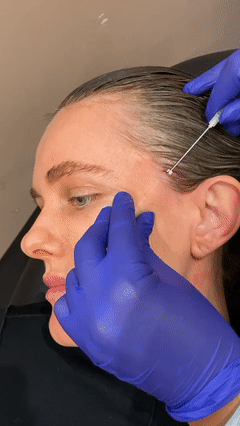
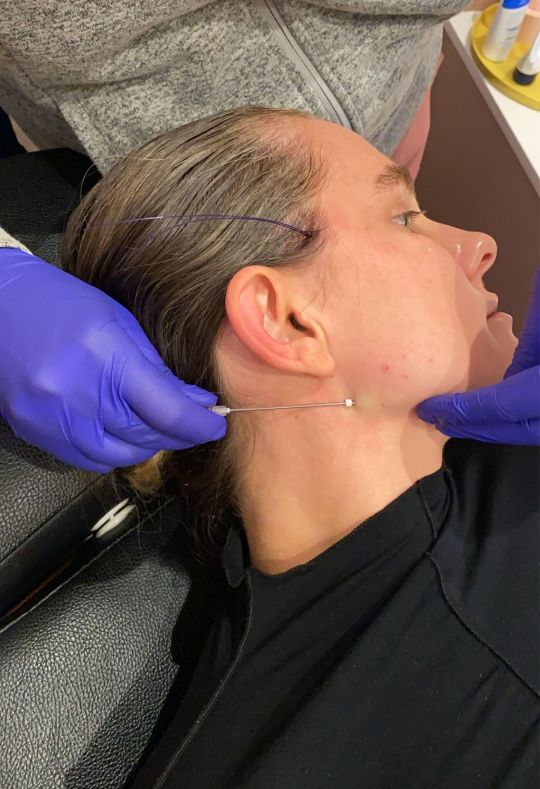
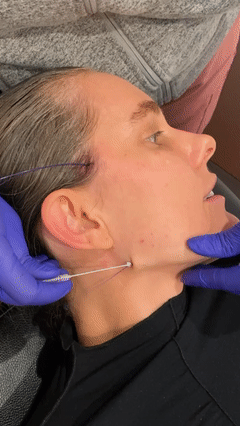
Where can you get threads? Can you share the different areas of the face and what they do for those areas?
Skin thickening can be done in most areas of the face where thin skin presents, such as the mid-cheek, jawline and forehead, but I have also placed thickening threads in the thin skin on the elbows, arms and legs. Lifting threads can be used to lift the brows, cheeks and jawline, but I have also used these threads to lift the skin around the knees as well as lift the front and back of the thighs.
How long does the treatment/procedure take?
ADVERTISEMENT

ADVERTISEMENT
Anya Hindmarch - I AM A PLASTIC BAGAnywhere from a few minutes to 30 minutes for face, depending on the procedure.
When will you expect to see results?
The results are usually the most noticeable between four and eight weeks.
What is the downtime? What else should you expect?
Slight swelling and bruising may occur and can last a couple of days, but tenderness can occur for up to two to three weeks in certain facial movements. For instance, you may feel absolutely fine on day five post–cheek lift but, all of a sudden, say something and feel a tenderness or soreness in the area. This is normal and subsides on its own within a week or two for most patients but can linger an additional week for the occasional patient.
How long does it last?
The threads dissolve in your system (depending on which kind were used) on average around two to six months, and after they have been absorbed, your collagen lasts until the aging process takes over again, which can be anywhere from 12 to 18 months for lifts and six to 12 months for skin thickening.
Do you need a follow-up appointment?
It is best to have a follow-up appointment one to two months after treatment to have your provider assess the progress of the threads and for you to see the photos of your baseline in comparison to where you are at your follow-up. It is quite motivating to see the subtle yet beautiful changes.
How much does it cost?
Skin thickening is approximately £990 per area, brow lift and jawline definition is approximately £1060, and mid-face lifting is £1400.
Who is the right candidate for threads? Who isn’t a right candidate for threads? What age should you consider threads?
Anyone who has significant skin laxity is a good candidate for threads. This treatment is contraindicated for someone who keloids easily (prone to raised scars). Your 30s are a good time to consider thread support because you can get away with less treatment, and the duration of results is longer due to the collagen still available in the skin in comparison to someone in their 60s. A patient in their 60s will see great results but will have to use a lot more threads and won’t get the duration you would typically get when you are younger.
Why are threads so effective?
Threads are so effective because it is a sure thing to bet on your body rebuilding itself. Our systems are so complex, and we are meant to heal, so the science of using a complex sugar to trigger the body’s natural healing response is always impactful. Whether a subtle lift or maximum skin rebuilding, our skin is doing the work, and we just need to trust the process.
What questions should you ask yourself before you get threads?
Do I have enough skin laxity? Someone without enough skin laxity is not going to see much of a difference. This patient tends to have very thick, oily skin and a fuller face. Threads won’t be of much help because the tissues and underlying fat pads are too dense to lift in most cases.
Do I have too much skin laxity? If the skin is too thin, the skin thickening threads should be placed two months before considering the lifting threads. In some cases, the skin is too thin, and threads should not be placed at all and should be thickened by PRFM, or platelet-rich fibrin matrix, which is skin thickening by your growth factors from your blood.
Are my expectations realistic? If you want your skin lifted a few inches, this treatment is not for you. It is best to do a consult for surgery. This lift is subtle yet noticeable and is for someone who is mindly of this type of therapy preventing further skin sagging and addressing skin laxity but is aware that this treatment does not replace surgery.
Am I being responsible with my asks? There is a trend of lifting the threads outwards and upwards in a “fox eye” fashion, creating a slanted, smaller eye frame. This is culturally insensitive to the Asian community and is quite frankly cultural appropriation in the purest form in my field. Be aware as a patient of what cosmetic trends you are buying into, and be mindful of what practices promote this type of advertising and treatment. We are in a time of profound learning and reflection, and that doesn’t stop at your cosmetic treatments.
How do you find a good provider who won’t overdo it and give a natural look? What questions should you ask?
Ask how long they have been doing these treatments for, and ask to see their thread portfolio. Pay attention to how your injector looks. It is a good indicator that if your provider looks too pulled or unnatural that you are about to look that way as well if you stay in their chair.
What are some of the things that can go wrong with threads? Why? How can you avoid it?
Dimpling can occur with threads placed too superficially, and it causes the skin to adhere to the superficially placed thread and give the appearance of a dimple. This usually resolves within a few weeks and can be expedited by radiofrequency.
Infection can occur at the site of insertion, which can be painful and inflamed due to bacteria entering the insertion site during the procedure or after. This can be remedied by antibiotics and steroids.
Incorrect placement and asymmetry can occur with an inexperienced thread provider, where one side of the face is held much more tautly than the other, which can be addressed by simply coming back for more threads on the heavier side.
Thread disengagement can happen, which means a thread or more threads become unlatched within the tissues due to injury or forced pressure on the skin. It is best to avoid firm pressure on the tissues for two to four weeks. If this happens, more threads can be placed.
What are the major thread myths out there, and what is the truth?
Myth 1: Threads don’t last more than a few weeks.
Fact: A few plastic surgeons used to post about thread effects not lasting, and then a few months later, after some more in-depth training and the right techniques, I saw on social media that they became thread fans after further education about them. There are many factors that lead to great thread results and duration. You have to use enough [and use] the right kind according to the patient’s anatomy, and the techniques make a huge difference. I have had patients come in at two years that still don’t need a touch-up with great thread placement. The results last. They just need to be achieved by the right provider.
Myth 2: Thread treatments are extremely painful.
Fact: Your provider should be providing you with enough local anesthesia that you should be able to talk through the appointment with ease if you wanted to. I have heard of terribly painful thread procedures because of the lack of numbing. It is necessary to have a comfortable and pleasant treatment. It is an odd feeling, for sure, but very tolerable.
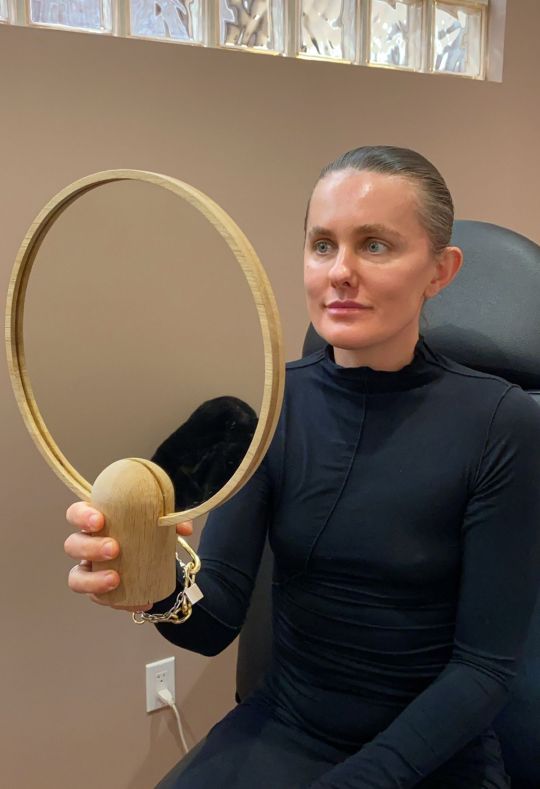




Author Sacha Strebe | Whowhatwear
Selected by CWC
ADVERTISEMENT
ADVERTISEMENTUp to 30% off Gift Sets |




